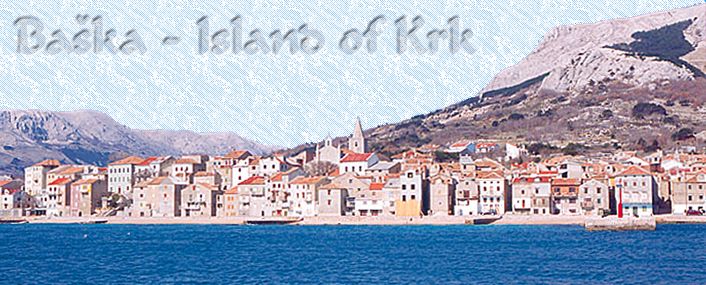The best view of Baska and it's surroundings can be enjoyed from St
Ivan church, which was once at the centre of the old town. From there the entire
bay, harbour and the barren island of Prvic at the bay's entrance is visible. The
blue of the sea and greenery of meadows is accentuated by the whiteness of the two
mountain ridges in the background.
Ancient romans were the first to discover the beautiful bay of Baska. They called
their settlement Corinthia, and according to archeological finds even then Baska
must have been a bathing resort.
On a hill 200 meters above the sea where the church and town's cemetery stand is
the place where the ancient Baska castle stood. In 1380 the Mlets conquered the croatian-hungarian
king Ljudevit I., and embarked on a rampant destruction of coastal towns and settlements.
The old castle of Baska did not escape either and was burnt to the ground. In consequence
the inhabitants moved into the valley, closer to the sea shore, and established the
new town of Baska in the 16th century. |
|
In the early romanesque church of St Lucija, in Jurandvor near Baska,
the "Bascanska Ploca" was found.
It is one of the oldest stone slabs with engraved writings. For more than 140 years
this legacy attracted the attention of historians and scientists from different fields. |
|

![]()